Are you looking for a step-by-step tutorial on how to start an eCommerce business? You are in the right place!
Every day, hundreds of entrepreneurs take the initiative to launch their eCommerce businesses, but only a few of them succeed.
Why?
Because starting an eCommerce business is a lot of work. It’s easy to get distracted if you don’t follow a proper guideline or checklist.
To help you out of this situation, we have created a comprehensive checklist that outlines each step to kickstart your online business.
Keep reading to uncover everything you need to start your eCommerce business today!
Why You Should Start an eCommerce Business in 2026
Starting an eCommerce business is a great idea for many reasons.
First, the eCommerce market is growing fast. More people are shopping online every day, which means more potential customers for your business. A recent stat shows that-
The global eCommerce market will surpass $6.8 trillion in 2026. The sales will continue growing at a CAGR of 7.8% between 2026 to 2027 and reach $8 trillion by 2027.
Online shopping is expected to keep growing, so the sooner you start, the better!
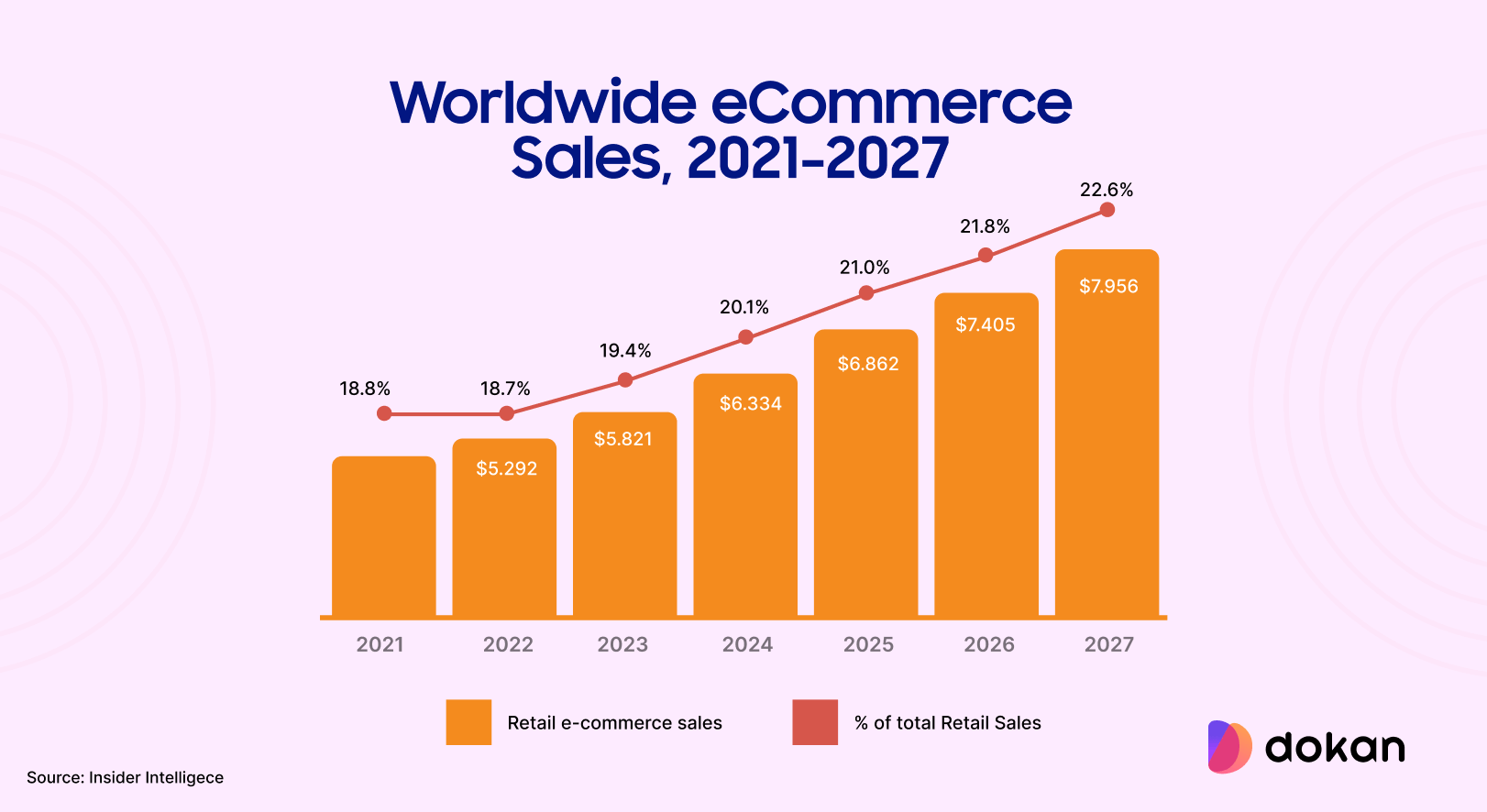
Another big reason is flexibility. With an eCommerce business, you can work from anywhere and at any time. You don’t need a physical store or a set schedule. This gives you more control over your time and lifestyle.
The costs to start an eCommerce business are also low. You don’t need to spend a lot of money upfront, especially with tools that help you set up an online store easily. Plus, new technology makes things even simpler. From accepting payments to shipping products, everything is more automated and user-friendly now.
One of the best parts of eCommerce is the ability to reach people all over the world. You’re not limited to selling in just one location. You can have customers from any country! This opens up a lot of opportunities to grow your business.
Now if you are convinced to start an eCommerce business of your own, let’s dive into the next part to know how to do that!
How to Start an eCommerce Business – A Step-by-Step Guide for You
Starting an eCommerce business is easy if you are only passionate about it. Because it requires lots of dedication, hard work, and sleepless nights to continue the journey unless you succeed. To help you in this journey and see you succeed, here we are with this 8-step guide.
Here are the steps:
- Identify Your Niche and Validate Your Idea
- Build a Business Plan
- Choose Your eCommerce Model
- Choose the Right eCommerce Platform
- Design Your Online Store
- Set Up Payment Gateways and Shipping Logistics
- Source and Develop Your Products or Services
- Create a Marketing Strategy
Now let us break down each point in several steps so that you can easily understand what you need to do to reach your destination!
01. Identify Your Niche and Validate Your Idea
A niche is a specific segment of a broader market. For example, fitness product is a broader market, on the other hand, eco-friendly yoga mats or fitness gear for seniors is a niche market.
By targeting a specific niche, you can:
- Build a loyal customer base
- Reduce competition
- Develop your marketing plan to meet specific customer needs
Wondering how to choose a perfect niche for you? Well, let us help you!
Here are the key steps to finding the perfect niche:
a) Start with Your Interests and Passions
One of the best ways to choose a niche is to look at what you’re passionate about. Running an eCommerce business takes time and effort, so picking something you enjoy will keep you motivated. Ask yourself questions like:
- What hobbies or activities do I enjoy?
- What products or services do I use regularly?
- What topics do I find myself constantly reading or talking about?
For example, if you love traveling, you could start an eCommerce store selling travel accessories. Or, if you’re a fitness enthusiast, you could sell workout gear or supplements.
b) Research Market Demand
Once you have a list of potential niches, the next step is to check if there is enough demand for your idea. Without demand, even the best product won’t sell.
Here’s how you can research market demand:
- Google Trends: Use Google Trends to see how often people search for products in your niche. For example, if you’re considering selling eco-friendly yoga mats, you can search for terms like “Yoga mats” or “sustainable fitness gear” and see how the interest has changed over time.
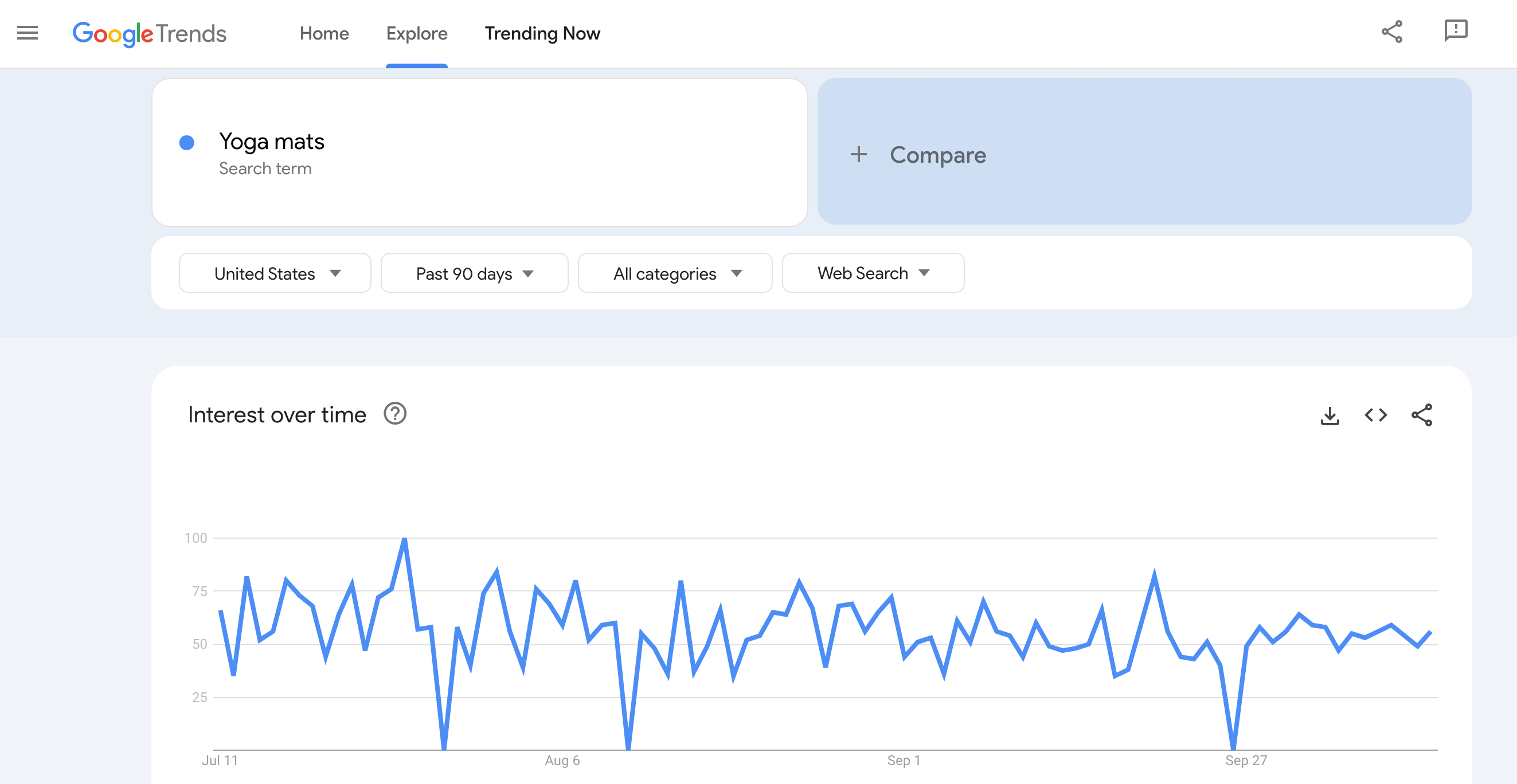
- Keyword Research: Tools like Ubersuggest or Ahrefs can show how many people are searching for specific products. Look for niches with consistent search volume but avoid those with extremely high competition.
- Check Online Marketplaces: Visit websites like Amazon, eBay, or Etsy to see how popular your potential products are. Look at customer reviews to understand what people like or dislike about existing products.
c) Analyze Your Competition
Understanding your competition is key to standing out. A niche with no competition may mean there’s no market, while too much competition might make it hard to succeed.
So what should you do? Let’s find out!
- Identify Top Competitors: Use Google or online directories to find the top players in your niche. For instance, if you’re thinking about selling skincare products, check out major online stores in that space.
- Examine Their Offerings: See what products your competitors are selling and at what price points. What makes them stand out? Are there gaps in their offerings you can fill?
- Read Customer Feedback: Visit competitors’ product pages and read reviews. Negative feedback can reveal pain points that you can address with your product.
For example, if many customers complain that a product lacks durability, you could focus on creating a more durable version to meet that need.
d) Validate Your Idea
After choosing a niche, the next step is to validate your idea. Validation ensures that there is actual demand for your product before you invest time and money.
Here are some effective ways to validate your idea:
Conduct Surveys and Ask for Feedback
One of the simplest ways to validate your idea is by asking potential customers directly. Create a short survey and share it with your target audience. You can use platforms like Google Forms or SurveyMonkey to gather responses.
Ask questions like:
- Would you buy this product?
- How much would you be willing to pay?
- What features do you look for in this type of product?
For example, if you plan to sell eco-friendly products, ask people if they’re interested in sustainable products and what features are important to them.
Create a Minimum Viable Product (MVP)
An MVP is a simplified version of your product that you can sell to test the market. Instead of developing a full product line, start with one or two basic products to gauge customer interest. You can use pre-orders or a crowdfunding campaign on platforms like Kickstarter to validate demand.
For instance, if you want to sell handmade jewelry, you could create a few designs and list them for pre-order on your website. If enough people place orders, it’s a sign your idea is worth pursuing.
Review Industry Data and Reports
Checking industry reports and data can give you a clearer picture of your niche’s growth potential. Resources like Statista or IBISWorld offer detailed reports on various markets to help you see whether your niche is expected to grow in the coming years.
For example, if you’re interested in selling pet products, you might find data showing that the global pet care market is projected to grow at a steady rate, indicating long-term demand.
02. Build a Business Plan

A business plan is a written document that outlines your business’s objectives and the strategies you will use to achieve them. It includes key details like your product offerings, market analysis, financial forecasts, and operational plans.
Your eCommerce business plan should cover the following key areas:
- Executive Summary
- Business Description
- Market Research and Analysis
- Products and Services
- Marketing and Sales Strategy
- Operations Plan
- Financial Projections
i) Executive Summary
The executive summary is the first section of your business plan but should be written last. It gives a brief overview of your entire plan and should capture the reader’s attention.
You should include these points in your executive summary:
- Summary of your business idea,
- Niche,
- Problem your product solves
- Your target audience,
- Products you’ll offer, and
- The unique value proposition that sets you apart.
ii) Business Description
In this section, describe your business in detail. Explain your mission, vision, and goals. You should also include information about your company structure, such as whether you’ll operate as a sole proprietorship, partnership, LLC, or corporation.
What to include:
- Business name
- Mission statement (what your business stands for)
- Vision (where you see your business in the future)
- Legal structure
- Short- and long-term goals
iii) Market Research and Analysis
You should focus on your target market, industry trends, and competitors in this section. Conduct thorough market research to identify the size of your market, customer demographics, and your competition’s strengths and weaknesses.
What to include:
- Target audience details (age, location, income level, buying habits)
- Market size and growth potential (use stats and data)
- Competitor analysis (list key competitors and explain how you will differentiate yourself)
iv) Products and Services
Now describe the products you will sell and what makes them unique. Explain the benefits of your products, their pricing, and any additional services you plan to offer, such as customization or fast shipping.
What to include:
- Product descriptions
- Unique selling points (USPs)
- Pricing strategy
- Any product bundles or upselling opportunities
v) Marketing and Sales Strategy
In this part, you should focus on your plan to attract and retain customers. Define your marketing channels (e.g., social media, email marketing, influencer partnerships) and how you will drive traffic to your website.
What to include:
- Marketing channels and strategies (social media, PPC, content marketing, etc.)
- Customer retention strategies (loyalty programs, email marketing)
- Sales funnels (how you will convert visitors into buyers)
vi) Operations Plan
The operations plan covers how you will run your day-to-day business. This includes where you will source your products, how you will handle shipping, and what tools or platforms you will use to manage the business.
What to include:
- Suppliers or manufacturers
- Shipping and logistics (who will fulfill and ship your orders)
- Key tools and platforms (Shopify, WooCommerce, Dokan Cloud, etc.)
vii) Financial Projections
The financial section is essential for understanding your startup costs, expected revenue, and profitability. It’s also important if you plan to seek funding from investors. Include detailed projections for the first year and beyond, as well as a break-even analysis.
What to include:
- Startup costs (inventory, website development, marketing budget)
- Revenue projections
- Break-even analysis (how long it will take to become profitable)
Want to use our business plan template? Get the template by clicking on this button!
03. Choose Your eCommerce Model
Choosing the right eCommerce model is one of the most critical decisions you’ll make when starting an eCommerce business. There are several eCommerce models to choose from.
Let’s explore the most common eCommerce models to help you decide which is the best fit for your business.
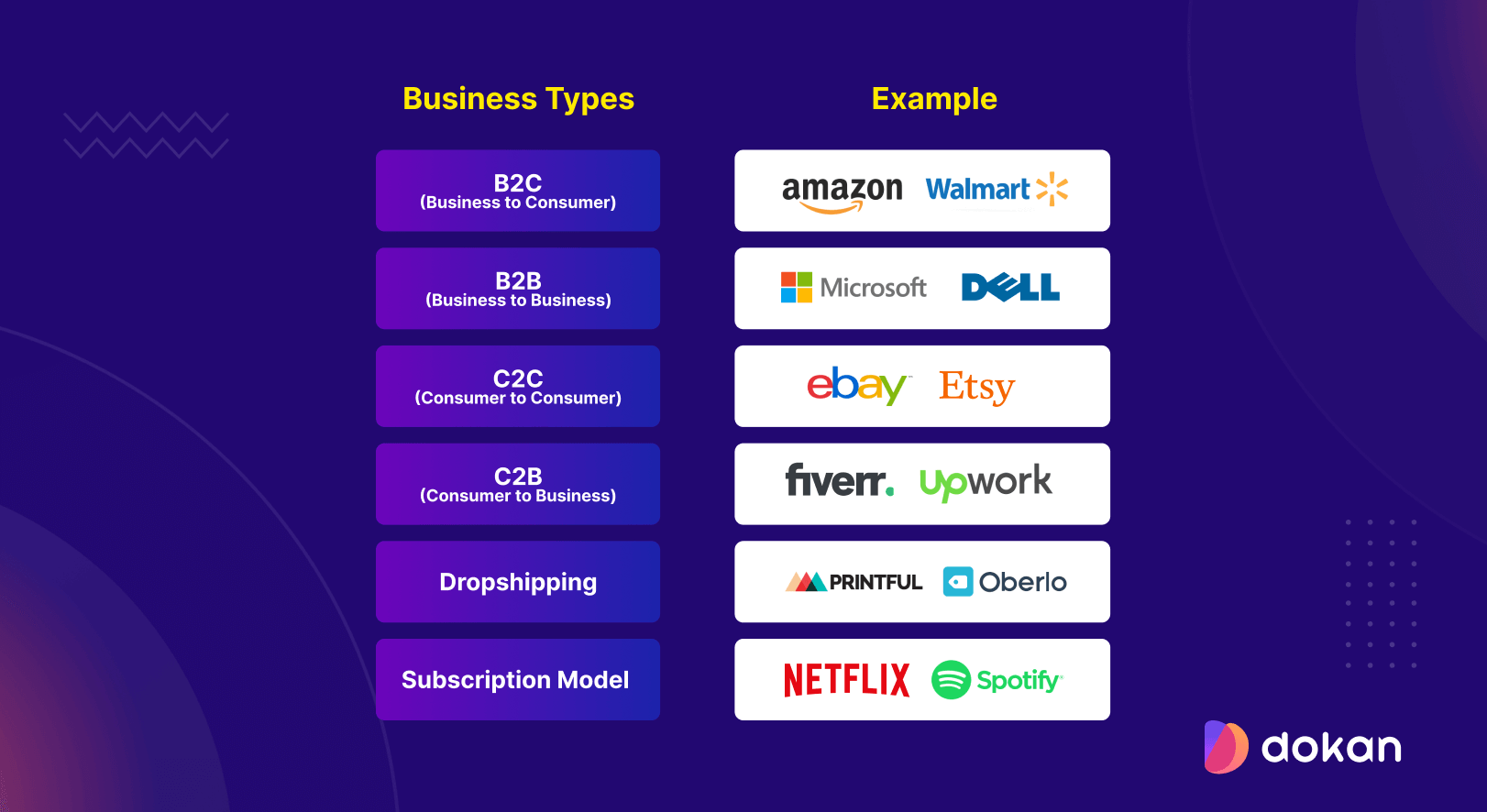
I. Business-to-Consumer (B2C)
B2C is the most common type of eCommerce model, where businesses sell directly to consumers. In this model, you are targeting individuals who want to buy products for personal use. B2C typically involves smaller orders and shorter sales cycles compared to B2B (Business-to-Business).
Example: If you run an online store selling clothes or gadgets, you are operating under the B2C model. Customers browse your products, add them to their cart, and purchase them directly through your website.
II. Business-to-Business (B2B)
B2B eCommerce focuses on transactions between businesses. Businesses sell products or services to other companies rather than individuals. B2B typically involves larger order quantities, long-term contracts, and a more complex sales process.
Example: A company that sells office supplies in bulk to other businesses operates under the B2B model. The focus here is on delivering products that help businesses run smoothly, and transactions are often larger than in B2C.
III. Consumer-to-Consumer (C2C)
C2C eCommerce involves consumers selling directly to other consumers, typically through online marketplaces like eBay, Craigslist, or Etsy. With this model, individuals list their own products for sale, and buyers purchase from them without a business acting as the middleman.
Example: If you sell handmade jewelry on Etsy or list a used phone on eBay, you’re participating in the C2C model. Buyers browse listings, and you, as the seller, fulfill orders directly.
IV. Consumer-to-Business (C2B)
In the C2B model, individuals sell products or services to businesses. This is less common than B2C or B2B but is growing thanks to the rise of freelance services and platforms like Upwork or Fiverr, where businesses hire individual professionals for specific tasks.
Example: If you’re a freelance graphic designer offering services to businesses or a blogger writing sponsored content for companies, you’re working in the C2B model.
V. Dropshipping
Dropshipping is a business model where you don’t hold any inventory. Instead, you act as the middleman between the customer and the supplier. When a customer places an order on your website, you forward it to a supplier who ships the product directly to the customer.
Example: If you run an online store where customers buy phone accessories, and your supplier ships those products directly to them, you’re using the dropshipping model.
VI. Subscription Mode
In this model, customers pay a recurring fee (usually monthly or annually) to access products or services. This model is becoming increasingly popular in eCommerce. Netflix and Spotify are popular examples of subscription model.
Example: If you run a monthly subscription box for healthy snacks or sell access to online courses, your business follows the subscription model.
How to Choose the Right eCommerce Model
- Your Product: What are you selling? Physical goods, digital products, or services? The type of product you offer will influence your model. For example, physical products often work best with B2C or D2C, while digital services may suit C2B or subscription models.
- Target Audience: Who are your customers? Are you targeting businesses, consumers, or other individuals? This will help you decide between models like B2B, B2C, or C2C.
- Startup Costs: Consider your budget. Dropshipping or C2C may be good if you have limited funds, while a B2B model may require a larger upfront investment for inventory and logistics.
- Customer Retention: If you’re looking for steady, predictable revenue, the subscription model offers recurring payments, whereas B2C and B2B models typically rely on one-time purchases.
- Competition: Research your competitors and see which models they use. This can give you insights into what might work best for your niche and product offering.
04. Choose the Right eCommerce Platform

An eCommerce platform is the software that powers your online store. It provides the tools and features you need to sell your products or services online, including product management, payment processing, shipping, and marketing.
While you are choosing the best eCommerce platform for your business, focus on these metrics:
i) Ease of Use
One of the first things to consider is the platform’s ease of use. You want a platform that is user-friendly, especially if you don’t have technical skills or coding experience.
ii) Customization and Flexibility
Customization is important for making your store stand out and aligning it with your brand. Some platforms offer limited customization, while others allow you to tweak everything from the homepage to product pages.
iii) Payment Gateway Options
Your eCommerce platform should support a variety of payment gateways to ensure smooth transactions. Some platforms come with integrated payment options, while others allow you to add third-party gateways.
iv) Security Features
Security is critical for any eCommerce store, as you’ll be handling sensitive customer information, including payment details. Your platform should have strong security measures in place.
v) Mobile Responsiveness
With more people shopping on mobile devices, having a mobile-friendly online store is a must. Ensure the eCommerce platform you choose offers mobile-optimized templates or responsive design.
vi) SEO and Marketing Tools
Search engine optimization (SEO) is essential for driving organic traffic to your store. Your platform should offer SEO tools to help you rank higher on Google and other search engines.
vii) Scalability
Your business may start small, but it’s important to choose an eCommerce platform that can grow with you. Whether you’re adding more products, expanding into new markets, or driving more traffic to your site, the platform should be able to handle increased demand.
viii) Support and Customer Service
When you run into technical issues, you’ll need a platform that provides reliable customer support. Look for platforms with 24/7 support options and a knowledge base of resources.
Popular eCommerce Platforms
- WooCommerce: A free plugin for WordPress that provides flexibility and customization options.
- Shopify: A cloud-based eCommerce platform for small and medium-sized businesses.
- Dokan Cloud: Another cloud-based eCommerce platform especially for creating multivendor marketplaces.
- Magento: A powerful platform suitable for large enterprises, offering advanced features and scalability.
- BigCommerce: A cloud-based platform with a focus on ease of use and scalability.
If you want to create an eCommerce store, you can use the WooCommerce plugin. And if you want to create an online multivendor marketplace, you can rely on Dokan Cloud – an unbeatable solution for creating any type of online marketplace.
05. Design Your Online Store
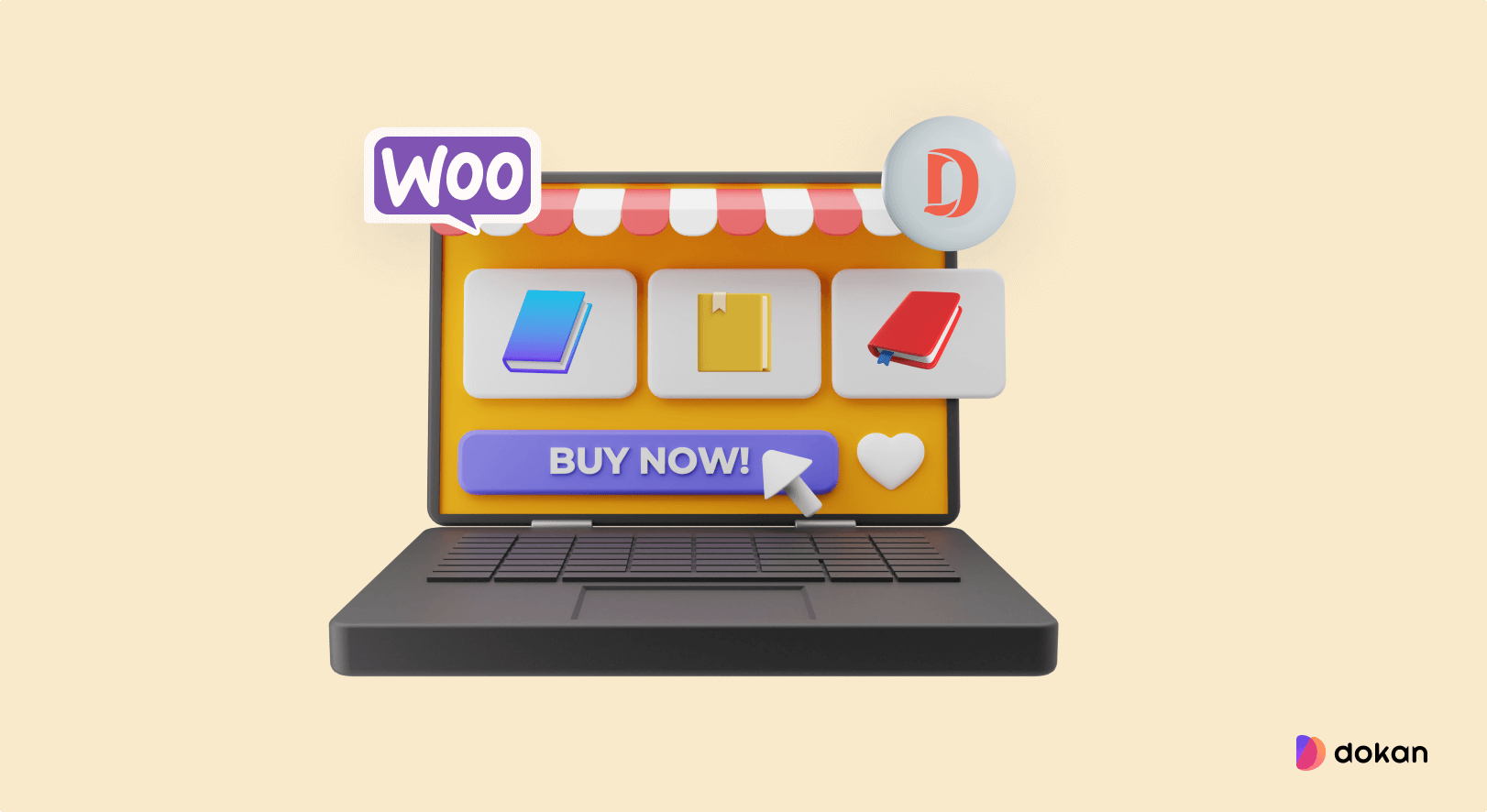
The design of your online store is crucial for creating a positive customer experience and driving sales. A well-designed store is visually appealing, easy to navigate, and inspires trust in your brand.
While you are designing your online store, you should consider:
- Clear and Consistent Branding: Use your brand’s colors, fonts, and logo consistently throughout your store to create a cohesive and recognizable brand identity.
- Intuitive Navigation: Make it easy for customers to find what they are looking for by using clear menus, search bars, and product categories.
- High-Quality Images: Use high-resolution images that show your products in the best possible light.
- Mobile-Friendly Design: Ensure your store is optimized for mobile devices, as more and more people are shopping online using their smartphones and tablets.
- Fast Loading Times: Optimize your website for speed to improve user experience and reduce bounce rates.
- Secure Checkout Process: Use a secure checkout process to protect your customers’ personal and financial information.
- Clear Call to Action: Use clear and compelling calls to action, such as “Add to Cart” or “Buy Now,” to encourage customers to make a purchase.
- Social Proof: Display customer reviews, testimonials, and social media followers to build trust and credibility.
If you aren’t sure which pages you should design for your eCommerce business, you can check out our comprehensive blog on must-have pages for an eCommerce site.
06. Set Up Payment Gateways and Shipping Logistics
A payment gateway allows you to accept payments from customers securely. When choosing a gateway, it’s important to consider your target audience, transaction fees, security features, and ease of use.
When you’re setting up payment gateways for your online store, consider these points:
- Ease of Integration: Choose a payment gateway that integrates seamlessly with your eCommerce platform.
- Transaction Fees: Different gateways charge different fees per transaction. Some may charge a fixed rate, while others charge a percentage of the sale. Compare rates to minimize costs.
- Supported Payment Methods: Ensure the gateway supports the payment methods popular in your target market (e.g., credit cards, PayPal, bank transfers).
- Currency Support: If you’re selling globally, choose a gateway that accepts multiple currencies.
Popular Payment Gateways:
- PayPal: Widely recognized and easy to set up. Ideal for both small and large businesses.
- Stripe: Great for businesses that want to offer a customized checkout experience. It supports multiple payment options and currencies.
- Square: A popular choice for businesses that sell both online and in physical locations.
- Authorize.Net: Known for its reliability and strong security features, perfect for businesses prioritizing secure transactions.
Setting Up Shipping
Shipping logistics involve organizing how your products will reach your customers. Effective shipping setup ensures fast, reliable deliveries, which are critical to a good customer experience.
This is how you can set up shipping for your online business:
- Choose Shipping Carriers: Partner with reliable shipping companies that align with your business needs. Popular options include FedEx, UPS, DHL, and national postal services.
- Shipping Rates: Decide whether to offer flat-rate, free shipping, or real-time carrier rates. Free shipping can attract more customers, but you need to factor the costs into your pricing.
- Delivery Zones: Set up shipping zones to define the areas where you deliver. This is particularly important if you plan to ship internationally, as different regions may require specific shipping methods and rates.
- Tracking System: Provide customers with tracking numbers so they can monitor their orders in real-time. Most shipping carriers offer tracking integrations.
- Shipping Time Estimates: Clearly state your delivery times to manage customer expectations. Offering express shipping options can also be beneficial for customers who need items faster.
Offer Multiple Shipping Options
Customers love the flexibility. Offering different shipping options gives them more control over delivery times and costs. You can provide standard, express, and same-day delivery depending on your shipping partners and product availability.
- Standard Shipping: Generally the most affordable and widely used option.
- Express Shipping: For customers who need their orders quickly. This option usually costs more.
- Same-Day Delivery: If your business operates locally, offering same-day delivery for local orders can give you a competitive edge.
- In-Store Pickup: If you have a physical location, offering in-store pickup can save on shipping costs and appeal to local customers.
07. Develop Your Products or Services
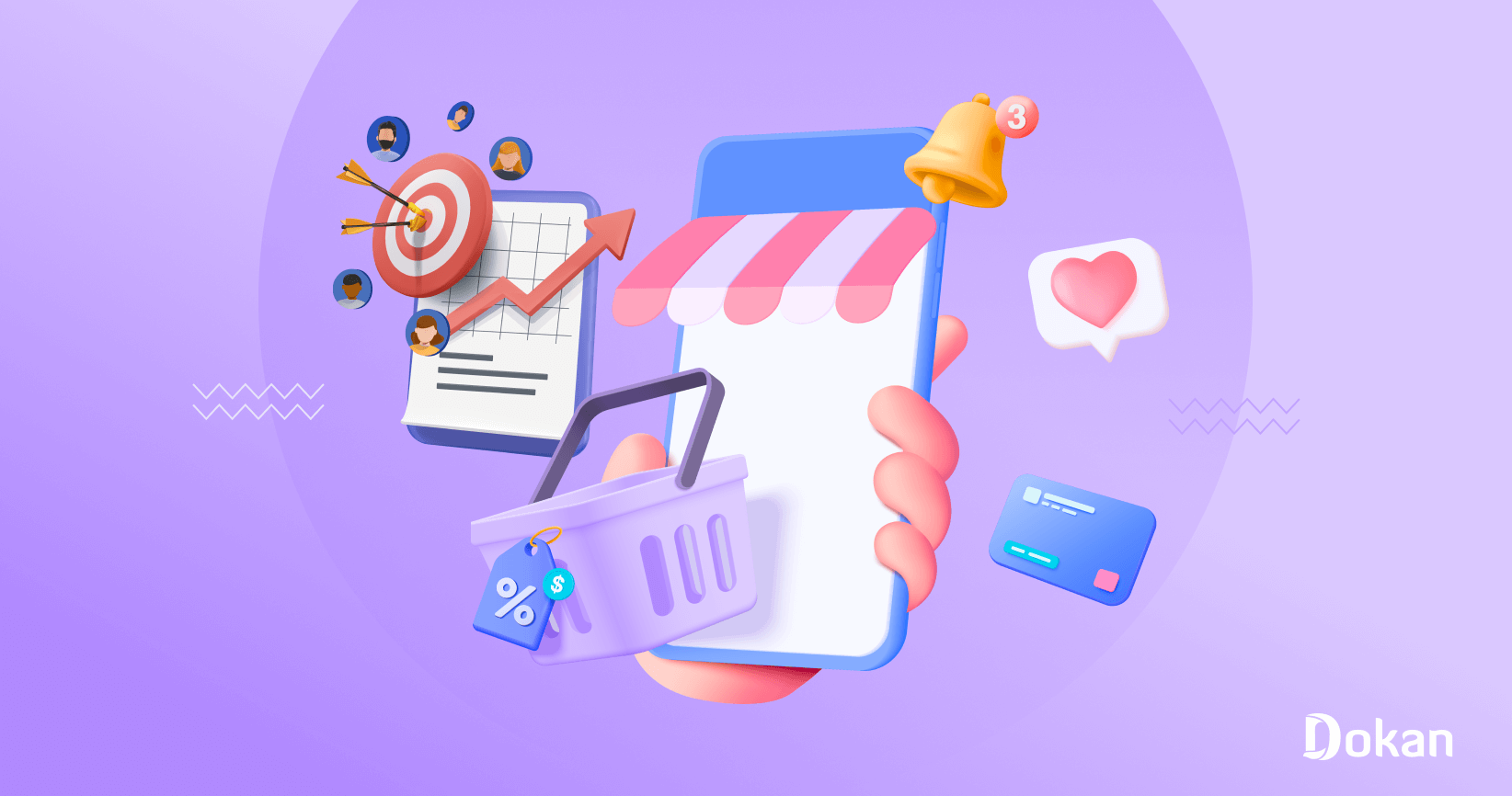
Developing your products or services is one of the most important steps in starting an eCommerce business. To develop your product, follow the below steps:
a) Define Your Product or Service Offering
Before you start development, you need to clearly define what you are offering. This involves identifying what problem your product or service solves and how it adds value to your target audience.
- What Problem Are You Solving: Every successful product solves a specific problem or fulfills a need. For example, a digital marketing agency solves the problem of businesses struggling to build an online presence.
- What Makes Your Offering Unique: Highlight what sets your product or service apart from competitors. This could be superior quality, affordability, or unique features.
- Who is Your Target Customer: Identify who your product is for by understanding their needs, preferences, and pain points.
If you’re developing eco-friendly water bottles, your product solves the problem of plastic waste, while your unique feature might be that the bottles are made from biodegradable materials.
b) Conduct Market Research
Market research is crucial in the product development phase. It helps you understand market trends, consumer preferences, and competitor offerings, ensuring that your product or service meets demand.
- Competitor Analysis: Study competitors in your niche to see what they offer and identify gaps in their products or services.
- Customer Surveys: Gather feedback from potential customers through surveys or focus groups to understand their needs.
- Industry Trends: Keep an eye on trends and innovations within your industry. Tools like Google Trends, Statista, and industry reports are helpful.
c) Focus on Product Design and Prototyping
Design and prototyping help transform your idea into a tangible product or service. During this phase, you’ll decide on the look, feel, and functionality of your offering.
- Sketch or Mockup: Create rough sketches or digital mockups of your product or service to visualize its appearance and features.
- Prototype: Develop a functional prototype or sample. This is especially important for physical products, where you’ll want to test the materials and usability.
- User Testing: Get feedback on your design from a small group of customers or testers to identify any necessary changes or improvements.
d) Pricing Strategy for Your Product or Service
Once your product is ready, you need to establish a pricing strategy. Your pricing will affect your profit margins, brand positioning, and market competitiveness.
These are the pricing models:
- Cost-Plus Pricing: Calculate the cost of producing the product and add a markup to ensure profitability. For example, if it costs you $20 to produce a product and you add a 50% markup, you’ll sell it for $30.
- Value-Based Pricing: Price your product based on the perceived value it offers customers. If your product solves a unique problem or has a premium feature, you can charge more than competitors.
- Competitive Pricing: Set your price based on what your competitors are charging. This can be a good strategy if you’re entering a crowded market.
Now your product is ready with the pricing plans. It’s time to promote your product so that the world can know about your product.
08. Create a Marketing Strategy

A strong marketing strategy is essential for the success of your eCommerce business. It helps you reach your target audience, drive traffic to your online store, and convert visitors into paying customers.
Let’s break down how you can create an effective marketing strategy in several key steps:
i) Understand Your Target Audience
The foundation of any successful marketing strategy is knowing who your customers are. Without this understanding, your marketing efforts may not resonate with the right people.
- Demographics: Determine basic characteristics like age, gender, location, income, and education level.
- Psychographics: Understand their interests, values, lifestyles, and purchasing behavior.
- Pain Points and Needs: What problems do they have that your product or service can solve? How do they make purchase decisions?
ii) Develop a Content Marketing Plan
Content marketing involves creating valuable, relevant content to attract and engage your target audience. It’s an effective way to drive organic traffic to your website, improve SEO, and build credibility.
- Blog Posts: Write informative articles that provide value to your audience. For example, if you sell skincare products, you could write blog posts about skincare tips, product comparisons, or ingredient benefits.
- Videos: Video content like product demonstrations, how-to guides, and behind-the-scenes looks are highly engaging and can be shared on platforms like YouTube, Instagram, and TikTok.
- Social Media Content: Share regular updates, promotions, and interactive content on platforms like Instagram, Facebook, and X (formerly Twitter) to engage your audience.
iii) Invest in Search Engine Optimization (SEO)
SEO is the process of optimizing your website and content to rank higher in search engine results. By appearing higher in search results, you can drive more organic traffic to your eCommerce store without paying for ads.
SEO strategies that you should implement:
- Keyword Research: Identify keywords and phrases your audience uses when searching for products or services like yours. Use tools like Google Keyword Planner or Ahrefs to find relevant keywords.
- On-Page Optimization: Include keywords in important parts of your website such as product descriptions, meta tags, titles, and URLs. Make sure your website is mobile-friendly and loads quickly.
- Content Optimization: Regularly create and update high-quality blog posts, product pages, and other content that target specific keywords to improve your rankings.
iv) Use Social Media Marketing
Social media platforms are a powerful tool for eCommerce businesses to connect with their audience, promote their businesses, and drive traffic to their store.
Social media marketing tips:
- Choose the Right Platforms: Focus on the platforms where your audience spends the most time. For example, if you’re targeting Gen Z, platforms like TikTok and Instagram may be more effective than Facebook.
- Create Engaging Content: Post a variety of content, including images, videos, customer reviews, and behind-the-scenes posts to keep your audience interested.
- Use Paid Advertising: Social media ads allow you to target specific demographics, making it easier to reach potential customers. You can run ads on Facebook, Instagram, TikTok, or Pinterest depending on your target audience.
v) Leverage Email Marketing
Email marketing allows you to communicate directly with your customers and build relationships over time. It’s a cost-effective way to keep your audience engaged and drive repeat sales.
Effective email marketing strategies:
- Build Your Email List: Offer incentives like discounts or free resources in exchange for customers’ email addresses.
- Segment Your Audience: Group your customers into different segments based on their preferences, past purchases, or behavior on your site to send more personalized emails.
- Create Automated Campaigns: Set up email automation for welcome emails, cart abandonment reminders, product recommendations, and post-purchase follow-ups.
vi) Utilize Paid Advertising (PPC)
Pay-per-click (PPC) advertising allows you to display ads on search engines, social media platforms, or other websites, paying only when someone clicks on your ad.
PPC platforms to consider:
- Google Ads: Run ads that appear when users search for relevant keywords on Google. This is great for targeting customers who are actively searching for products like yours.
- Social Media Ads: Run targeted ads on social platforms like Facebook, Instagram, and Pinterest, allowing you to reach a specific audience based on demographics, interests, and behavior.
- Display Ads: Use display networks to show banner ads on various websites and apps. This can help build brand awareness even before someone searches for your product.
Bonus 01: How Much Does It Cost to Start an eCommerce Business

Now you know how to start an eCommerce business. However, if you are wondering how much it costs to start an eCommerce business, no worries. In this segment, we will guide you to prepare an estimated budget to start an eCommerce business.
I. Domain Name and Hosting
A domain name is your website’s address (e.g., www.yourstore.com), and hosting is the service that makes your website accessible online.
- Domain Name Cost: Typically, $10–$20 per year.
- Hosting Cost: Depending on your needs, web hosting can cost $5–$30 per month for basic shared hosting, while higher-end options like VPS hosting can go up to $100+ per month.
Need help to come up with the right domain name for your business? Check our blog on finding best domain name and get a suitable domain name for your business!
II. eCommerce Platform
The platform you choose to build your online store is another important cost. Some platforms offer free basic plans, while others have monthly fees based on the level of service you require.
- Shopify: Starts at $39/month with basic features but can go up to $399/month for more advanced plans.
- WooCommerce: Free to use, but you’ll need to pay for hosting, themes, and extensions.
- BigCommerce: Starts at $29/month for the standard plan and can reach up to $299/month for more advanced features.
III. Website Design and Themes
The design of your online store plays a huge role in attracting and retaining customers. You can either use a free theme, purchase a premium one, or hire a professional designer.
- Free Themes: Available on platforms like WooCommerce, Shopify, or WordPress.
- Premium Themes: $30–$200 for a professionally designed theme.
- Custom Design: Hiring a designer could cost anywhere from $500 to several thousand dollars, depending on the complexity.
IV. Payment Processing Fees
To accept payments from customers, you’ll need a payment gateway, which charges a fee for each transaction.
- PayPal: Charges 2.9% + $0.30 per transaction.
- Stripe: Also charges 2.9% + $0.30 per transaction.
- Shopify Payments: Rates are similar but decrease as you upgrade your Shopify plan.
V. Shipping Costs
Shipping can be a major expense, especially for physical products. You’ll need to factor in shipping supplies, postage, and possibly warehouse storage if you aren’t fulfilling orders yourself.
- Shipping Rates: Vary depending on the shipping provider and the weight/size of your products. Services like USPS, UPS, and FedEx offer various pricing models.
- Fulfillment Services: If you use fulfillment centers like Amazon FBA, you’ll pay storage and fulfillment fees.
VI. Marketing and Advertising
Marketing is crucial for driving traffic to your store. You might use free strategies like SEO and content marketing, or invest in paid advertising like Google Ads or Facebook Ads.
- SEO and Content Marketing: Can be free if you do it yourself, but hiring an expert could cost $500–$3,000 per month.
- Google Ads: Expect to spend anywhere from $5 to $50 per click depending on the competitiveness of your niche.
- Facebook Ads: Can cost anywhere from $0.50 to $2 per click.
Total Estimated Costs
Here’s a rough estimate of what it could cost to start an eCommerce business:
| Expense | Estimated Cost |
|---|---|
| Domain and Hosting | $135/year |
| eCommerce Platform | $29–$100/month |
| Website Design (Premium Theme) | $100 one-time |
| Payment Processing Fees | 2.9% + $0.30 per transaction |
| Inventory (if applicable) | $500–$1,000+ (one-time) |
| Shipping | $500/month |
| Marketing and Advertising | $300–$1,000/month |
| Tools and Apps | $30–$100/month |
The total cost to start your eCommerce business can range from $500 to $5,000+, depending on your choices for each category.
Bonus 02: Starting an eCommerce Business Checklist
To help you stay organized and ensure you don’t miss any critical steps, here’s a detailed checklist for starting your eCommerce business in 2026:
1. Research and Planning
- Identify Your Niche: Choose a specific market or product area.
- Validate Your Idea: Conduct market research, analyze competitors, and assess demand.
- Build a Business Plan: Outline your business goals, revenue model, and strategy.
2. Set Up Your Business
- Register Your Business Name: Make sure it’s unique and aligns with your brand.
- Choose a Legal Structure: Decide whether to register as an LLC, sole proprietorship, etc.
- Get Required Permits and Licenses: Check local laws for necessary business permits.
3. Choose Your eCommerce Model
- Decide on a Fulfillment Model: Dropshipping, self-fulfillment, or third-party fulfillment.
- Set Up Your Supply Chain: If selling physical products, secure suppliers and negotiate terms.
4. Build Your Online Store
- Choose an eCommerce Platform: Shopify, WooCommerce, BigCommerce, etc.
- Buy Domain Name and Hosting: Purchase a unique domain and choose a reliable hosting service.
- Design Your Store: Select a theme, create branding, and design a user-friendly interface.
5. Set Up Key Features
- Set Up Product Pages: Add product descriptions, images, and pricing.
- Configure Payment Gateways: Enable payment methods like PayPal, Stripe, or Shopify Payments.
- Set Up Shipping Options: Define shipping zones, rates, and preferred carriers.
- Install Necessary Plugins/Apps: Add features like email marketing, live chat, and analytics.
6. Develop Your Products/Services
- Source or Develop Products: Work with manufacturers, suppliers, or create your own products.
- Set Up Inventory Management: Organize stock levels and fulfillment processes.
7. Marketing and Customer Acquisition
- Create a Marketing Strategy: Decide on SEO, email marketing, social media, and paid ads.
- Build an Email List: Set up email marketing to capture leads and nurture customer relationships.
- Launch Social Media Channels: Create profiles on platforms like Instagram, Facebook, and TikTok.
8. Launch and Scale
- Test Your Store: Check for bugs, ensure the checkout process works, and conduct a soft launch.
- Officially Launch Your Store: Announce your launch through email, social media, and ads.
- Track Performance: Use Google Analytics or your platform’s analytics to monitor traffic and sales.
- Optimize and Scale: Refine your marketing strategies, add new products, and expand your reach.
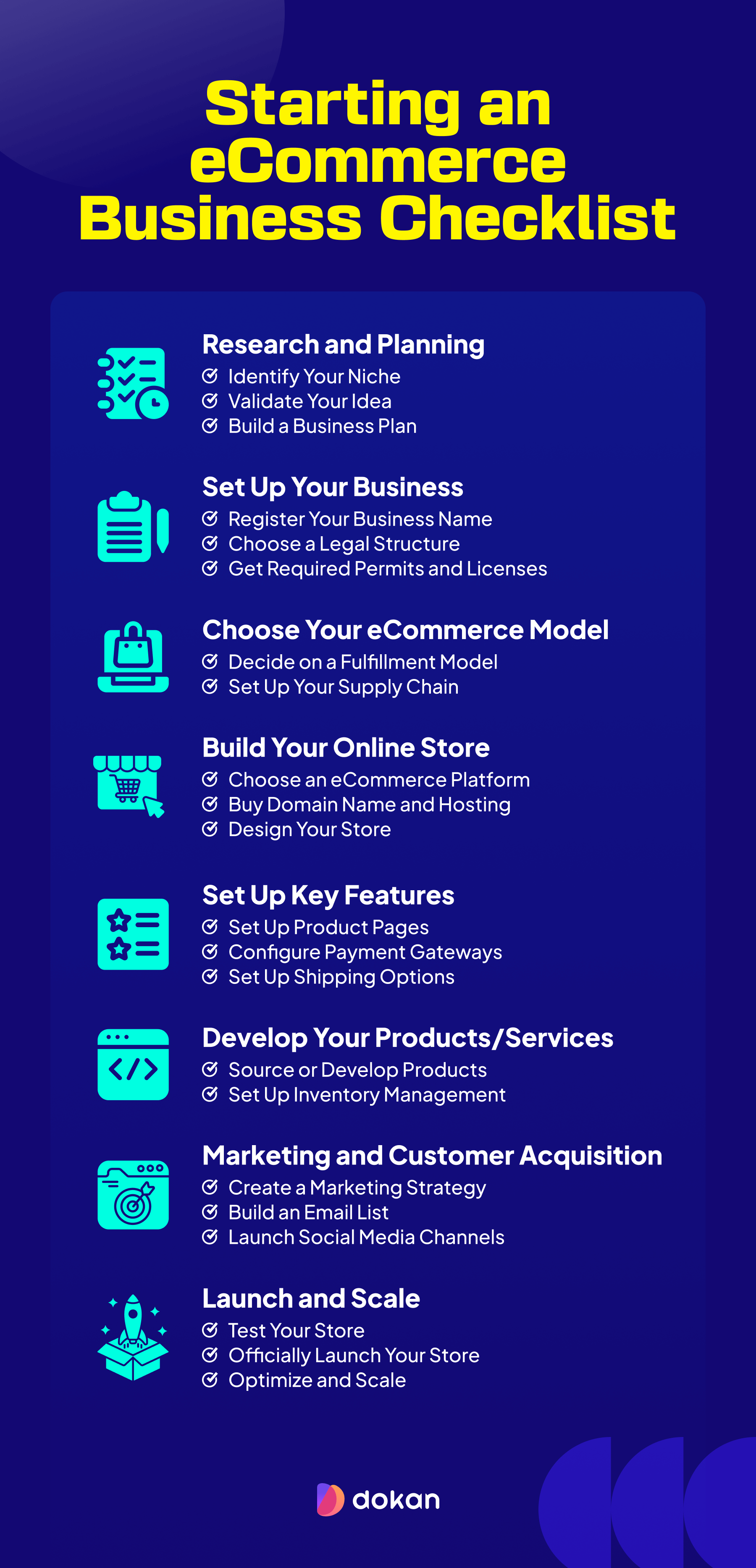
How to Start an eCommerce Business – Ending Note
Finally, you are here which means now you know every single detail of starting an eCommerce business in 2026. We have shared everything from choosing a niche to launching your business so that you can manage the whole process all by yourself.
So, how was it? Was it difficult? No, right?
We know it’s a long process. However, if you follow it accordingly, we believe you will be able to launch your online business smoothly.
After starting your business, you’ll require a pricing strategy to get more customers. Check our blog on most effective pricing strategies for more conversions.
Now if you have any feedback related to this blog, feel free to share that with us using the comment box below. We always appreciate our readers’ feedback. Thank you!
Subscribe to
Dokan blog
We send weekly newsletters, no spam for sure!

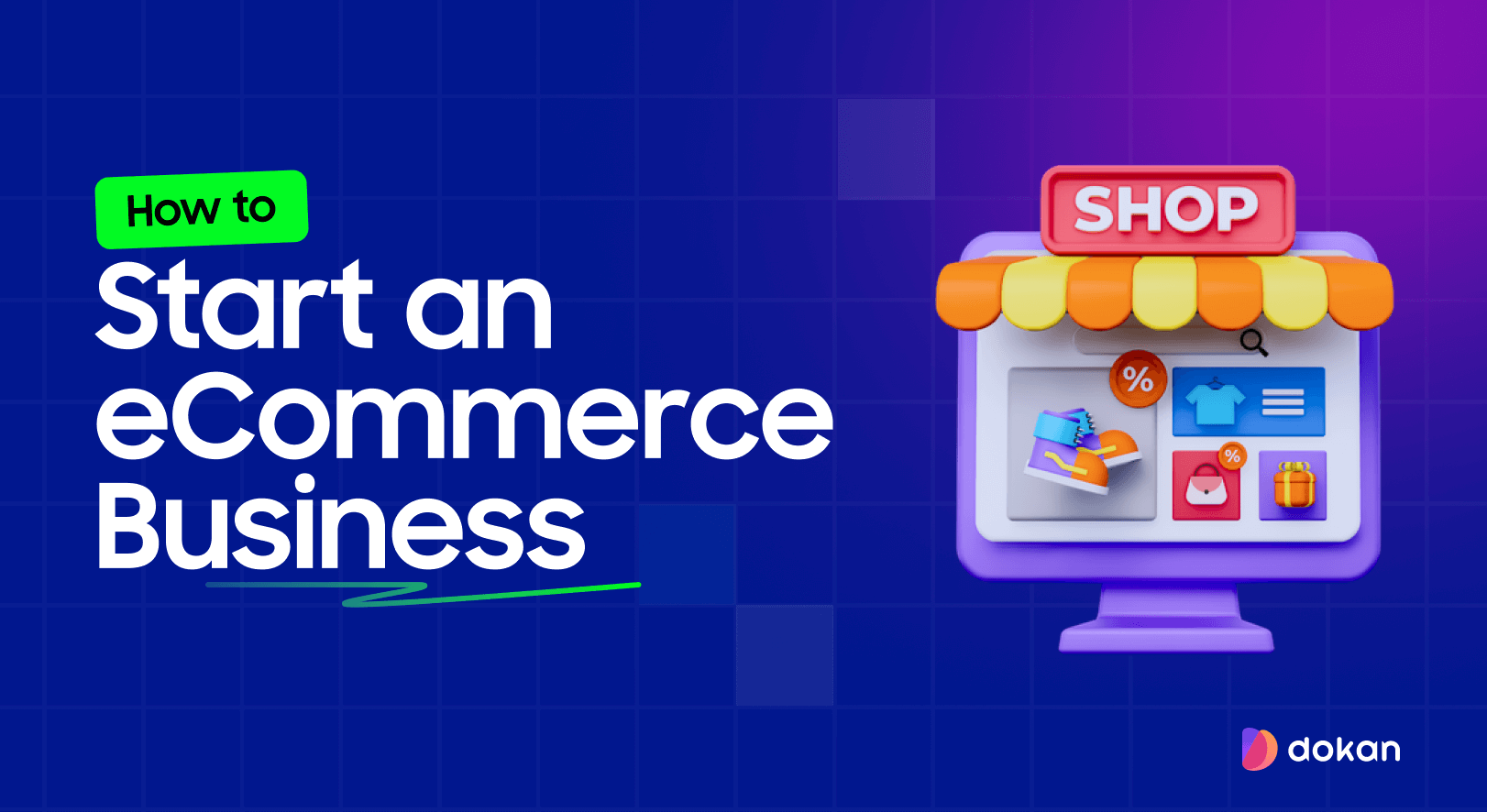
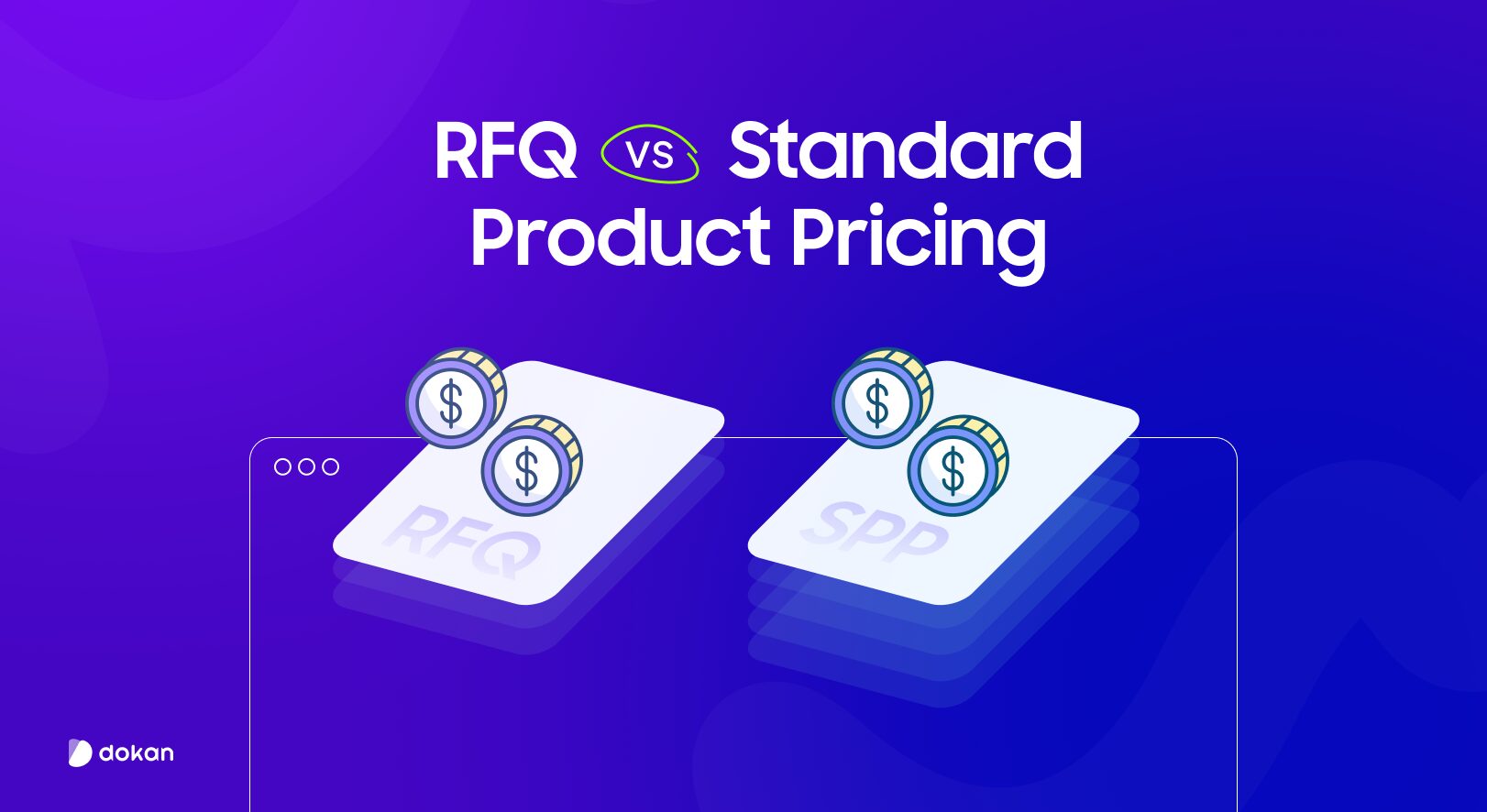
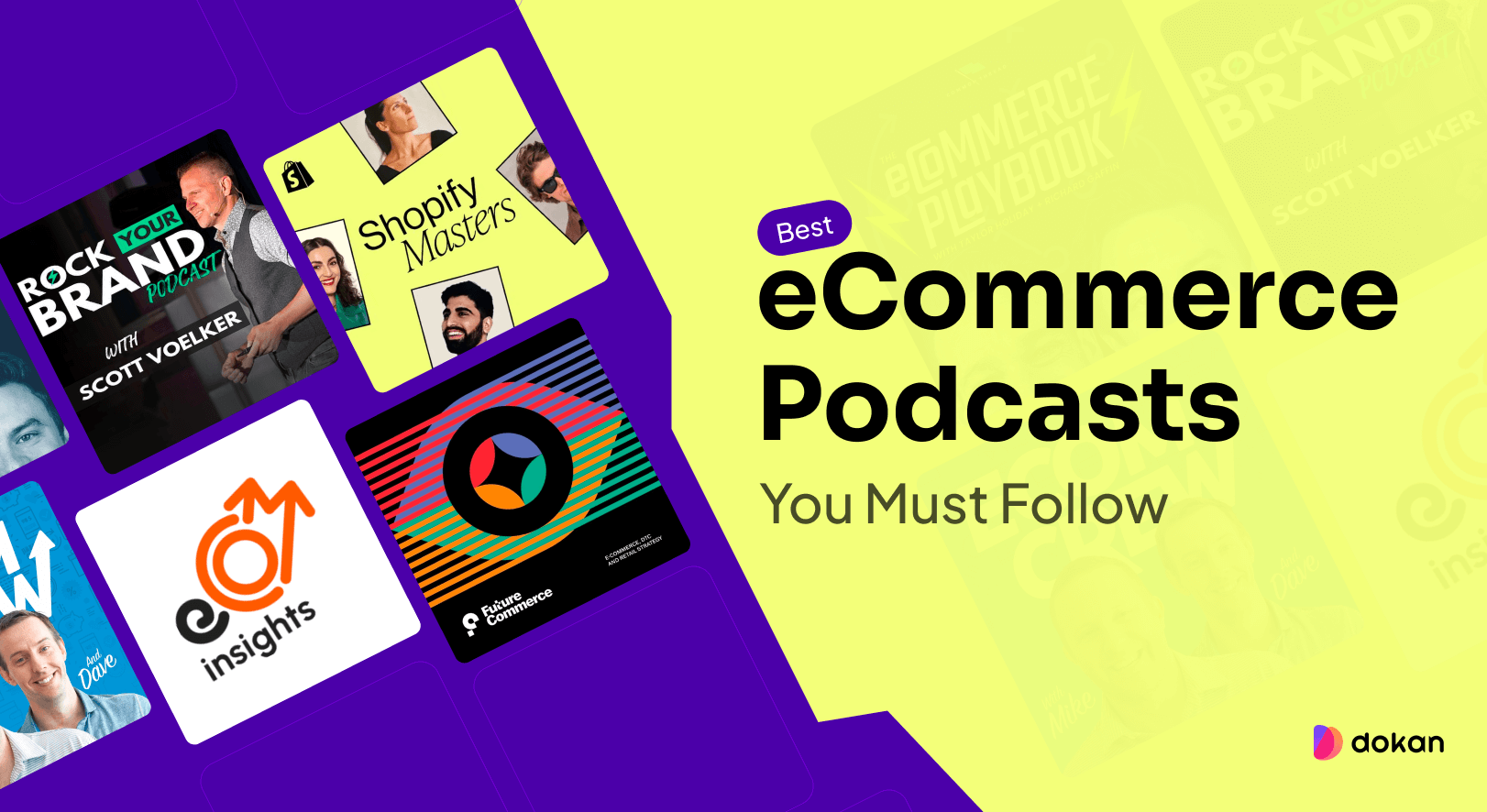

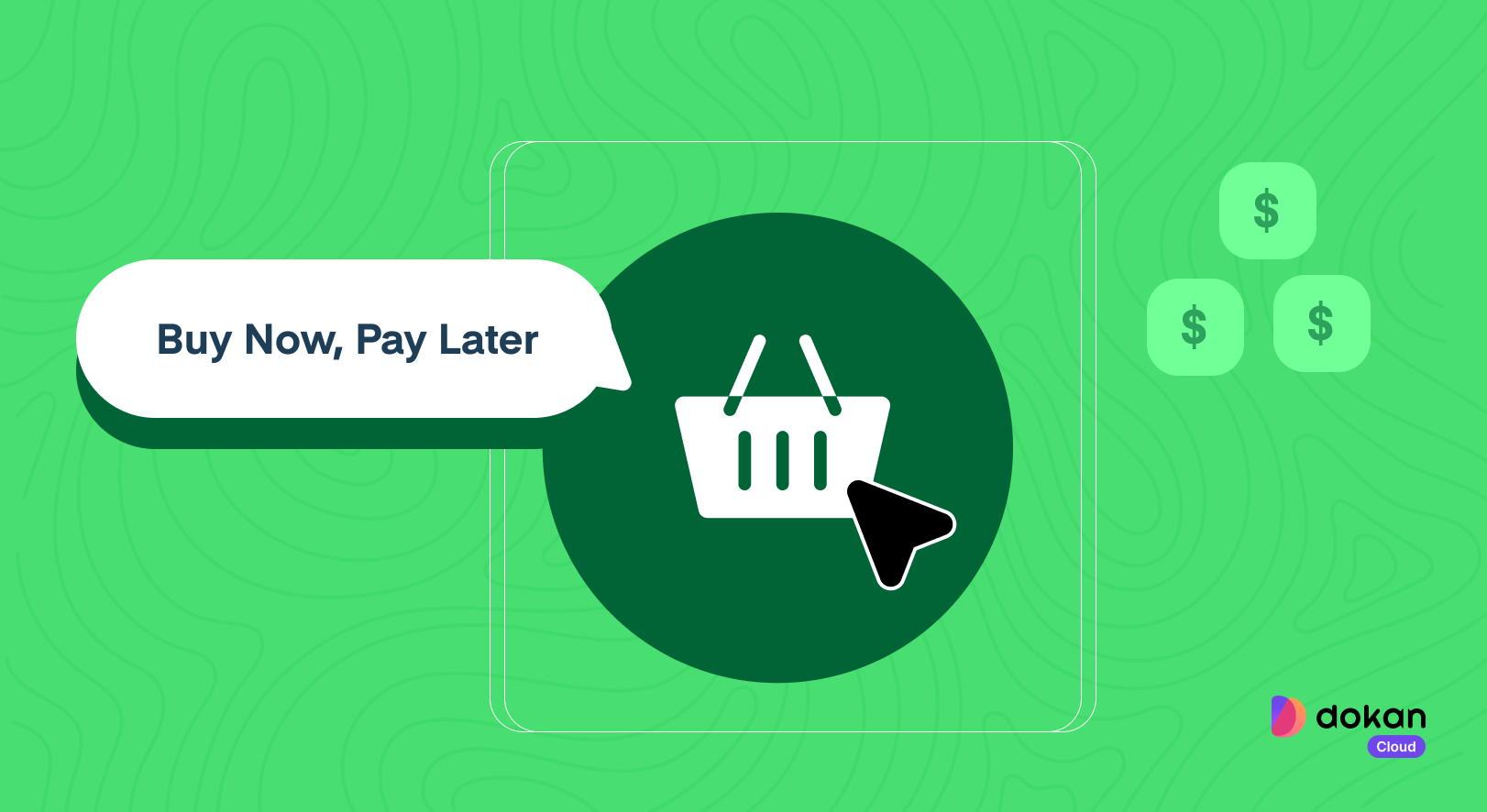

Leave a Reply